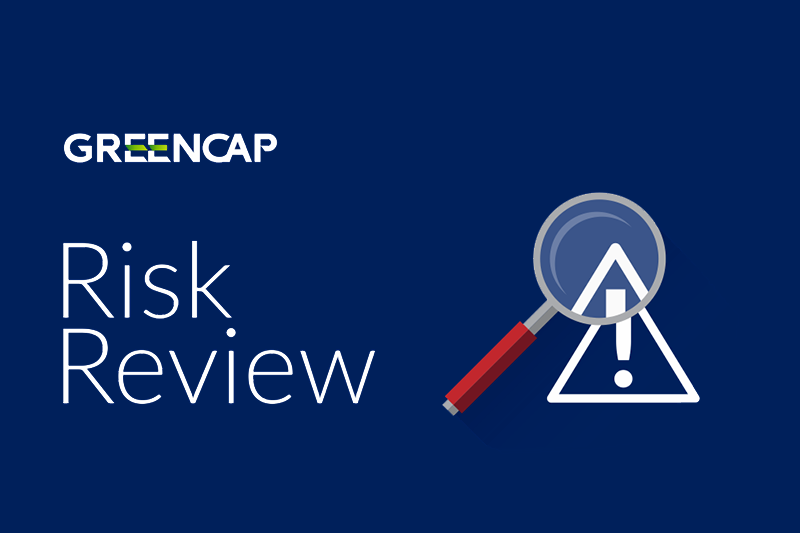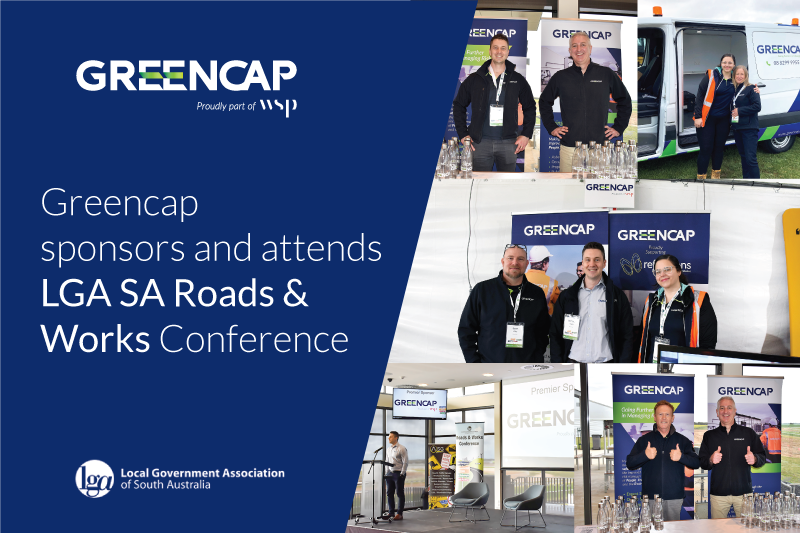News & Insights
Crystalline Silica Risks & Controls
Updated: June 2020
Contents
- What is respirable crystalline silica (RCS)
- Work Processes Generating RCS
- Exposure Routes
- Health Effects
- Exposure Standards
- Regulatory Requirements
- Assessment
- Control
- Case Study: Refractory Lining Crew – Smelting
The impact of working with Respirable crystalline silica is a topical issue that is receiving increasing attention due to rising numbers of affected workers. Australia, and other countries, are witnessing a resurgence in diagnoses of silicosis disease in workers in mining, construction and now those who work with engineered stone.
There has been a disturbing rise in the number of workers presenting with silicosis, a condition that has also been known as ‘miner’s phthisis’, ‘grinder’s asthma’ and ‘potter’s rot’.
Management should be proactive with an industry focus, in anticipation of increased legislative rigour and statutory guidance.
What is respirable crystalline silica (RCS)
Silica, or silicon dioxide, is present in quartz, stone, soil, granite, bricks, cement, grout, mortar, bitumen, and also in engineered stone products. It is the crystalline form of silica in these materials that has raised concern in recent years. Materials such as drywall, fibre cement products, some paints, roofing tiles and pavers and stone such as granite, quartzite, sandstone, shale and limestones have potential to contain the crystalline form of silica.
Silica composition of various rocks and rock products.
| Type | Silica Composition |
|---|---|
| Granite | 25-40% |
| Shale | 22% |
| Natural sandstone | 67% |
| Composite (engineered or manufactured stone) | >90% |
| Aggregates, mortar and concrete | Various |
Source: SafeWork Australia
Work Processes Generating RCS
There are numerous work processes that have the potential to release RCS dust either directly or indirectly by disturbing settled materials. Respirable crystalline dust is also present in numerous construction materials and can become respirable in some of the following example processes.
- Cutting of stone
- Abrasive blasting
- Demolition of structures, building and refurbishment
- Drilling
- Chasing
- Grinding
- Commination processes (Including rock crushing and milling mineral samples)
- Jackhammering
- Road works and earth works
- Polishing and dry sanding
- Concrete grinding, sanding and polishing
- Sanding
- Scabbling, scarifying and scrapping
- Cleaning processes (e.g. sweeping)
Any activity where a high revolution, impact or crushing/breaking type activity is occurring, has a greater potential to release respirable crystalline silica dust into the atmosphere, which when inhaled, can have irreversible health consequences if exposed to the lungs.
Exposure Routes
The primary exposure route for crystalline silica is inhalation of dust in the respirable fraction. The respirable dust fraction are the particles that are so small that they pass to the unciliated lower regions of the lung airways, the alveoli, where they are deposited. These particles are generally less than 5-7 µm in diameter.
Health Effects
Exposure to crystalline silica can lead to irreversible health effects and death from both acute (short term) exposures and chronic (longer-term) exposure.
- Acute silicosis can develop quickly after heavy exposure to crystalline silica. The lungs fill with a protein containing fluid which can lead to severe shortness of breath and can lead to death.
- Accelerated silicosis is associated with high exposure where there is a rapid increase of scarring of the lung (fibrosis) within the first 10-years of exposure.
- Chronic, or more typical, silicosis where the fibrosis occurs more slowly can take up to 30 years after the first exposure.
Silicosis affects the immune system and increases the potential for lung diseases such as tuberculosis.
Treatment options for individuals in advanced stages is generally poor, with the provision of oxygen and potential lung transplants.
Exposure Standards
Safe Work Australia has published workplace exposure standards (WES) for crystalline silica on its website in the Hazardous Chemical Information System (HCIS), as well as within the guidance document, Workplace Exposure Standards for Airborne Contaminants – 16 Dec 2019.
The current exposure standard for quartz, cristobalite and tridymite as respirable dust is 0.05mg/m3 measured as a time weighted average (TWA) for an 8-hour work shift, which was reduced from 0.1mg/m3 in the December 2019 update; however, this updated WES will only have effect in a jurisdiction when it is ratified by that jurisdiction, with further guidance provided on the SafeWork Australia website.
It is important to note that extended shifts will generally require a shift adjustment factor to be applied to the WES.
Regulatory Requirements
AAll states have regulatory requirements for crystalline silica including the banning of ‘sand blasting’.
As well as personal exposure monitoring, health surveillance is required in most states where potential exposure to respirable crystalline silica is an exposure risk. The AIOH defines increased risk in its Crystalline Silica Position Paper as a long-term potential for exposures to exceed 50% of the workplace exposure standard. Australia has published guidelines for Health Surveillance, but in most instances, a baseline x-ray and ongoing chest x-rays are required, with lung function testing and other parameters. It is suggested that a review of the regulations and professional advice is sort prior to implementing a health surveillance protocol.
The Model Work Health and Safety Regulations also state in Schedule 14 that health monitoring must be conducted for those at risk. Generally, all states have requirements for surveillance in WHS regulations or mining regulations; however, Queensland and Victoria have lead the way, introducing their own Codes of Practice:
- QLD – Code of Practice 2019 - Managing Respirable Crystalline Silica Dust Exposure in the Stone Benchtop Industry
- VIC – Compliance Code 2020 – Managing Exposure to Crystalline Silica: Engineered Stone
Assessment
Some states have specific regulatory requirements for assessment of personal exposure to crystalline silica in WHS regulations and/or specific mining regulations.
In Queensland, there are a number of governance documents that provide the requirements for setting up a respirable crystalline silica assessment, including:
- Code of Practice 2019 - Managing Respirable Crystalline Silica Dust Exposure in the Stone Benchtop Industry
- Recognised Standard 14 - Monitoring Respirable Dust in Coal Mines
- QGL02 – Guideline for Management of Respirable Crystalline Silica in Queensland Mineral Mines and Quarries (2018)
Similarly, the Government of Western Australia’s Department of Mines, Industry Regulation and Safety has a regulatory requirement around developing a sampling quota to support a risk-based hygiene management planning process. The risk-based occupational hygiene management plan is required in advance for all Greenfield sites and existing sites should have a risk-based hygiene management plan approved by the responsible inspector.
A Certified Occupational Hygienist can develop an exposure assessment strategy and assist in implementing regulatory requirements for occupational health and hygiene. Any occupational exposure assessment should start with a workplace characterisation process where workers are organised into similar exposure groups based on work activities.
An occupational hygiene program for crystalline silica should have a formalised communication process as well as an appropriate, regulatory compliant, record retention.
Control
Occupational safety and health legislation require employers, in consultation with workers, to identify hazards, assess risks and implement practical controls to protect workers’ health and safety.
Silica can be identified by considering the types of materials used in the task and the way they are used. More information is available in material safety data sheets where these are available and from material suppliers.
There are more specific controls required within Queensland and Victoria, as described within their respective Codes of Practice.
Examples of controls for crystalline silica include:
- Choosing materials (e.g. abrasive blasting agents) that are silica free or have the lowest silica content
- Designing buildings with recesses for services to reduce the amount of chasing required
- Providing vehicles with enclosed cabs fitted with high efficiency air filters, for dusty earthworks or mining
- Using wet work methods to reduce dust (e.g. wet cutting or polishing, water sprays during earthworks)
- Using water spray or rubber curtains around conveyor transfer points
- Using local extraction ventilation, either fixed or on-tool (e.g. for mixing, crushing, milling, drilling or chasing)
- Shadow vacuuming (e.g. during drilling)
- Vacuum clean-up rather than sweeping
- Not blowing dust with compressed air
In addition to other controls, PPE such as an appropriate respirator (selected in accordance with Australian/New Zealand Standard AS/NZS 1715: Selection use and maintenance of respiratory protective equipment) may be required, depending on the task and the effectiveness of the other controls.
Recent publications have indicated that wet cutting is not sufficient to control exposure in some circumstances. Furthermore, a recent RCS monitoring of road crew workers who were working with concrete (cutting and grinding revealed TWA levels that easily exceeded the proposed new standard of 0.02mg/m3.
Workers must be given information and training on:
- Possible health effects of crystalline silica exposure
- Control measures and how to use them (including PPE)
- Any requirement for health surveillance under regulation 5.21 of the OSH regulations
The employer should keep records of:
- The risk assessment
- Air monitoring results
- Health surveillance reports
- Training records
Generally, control should be consistent with the hierarchy of controls being
- Elimination
- Substitution
- Engineering
- Administration
- Personal protective equipment (PPE) as the last resort
Case Study: Refractory Lining Crew – Smelting
A refractory crew was required to repair and reline crucibles used to capture molten metal from a smelting process with refractory products. A walk-through survey was initially conducted to determine agents within the work area that had the potential to cause adverse health outcomes as part of workplace basic characterisation.
During the survey, it was noted that the type of materials used, and the process in which they were used, had the potential to expose individuals to respirable crystalline silica as it was anticipated to be a constituent of the material.
Two primary activities were occurring that had potential to expose individuals
- Manual transfer of a powdered material that was mixed into a slurry prior to use in the relining process to fill gaps between refractories
- High speed cutting and grinding of refractory materials
It was suspected that the material contained crystalline silica and only personal protective equipment was used during the relines. One reason for this was that the safety data sheet stated that the material was not hazardous and did not contain crystalline silica.
Immediate action was taken to improve the respiratory protection used from P2 disposable to quantitatively fit-tested reusable respirators. Respirable crystalline silica monitoring was conducted on workers within the area and personal exposure monitoring data was mostly below the time weighted average 8-hour exposure standard for most workers. Further actions were taken following an incident investigation.
Further controls were implemented including local exhaust ventilation over the mixing process and cutting / grinding processes. Although these controls reduced potential personal exposures, respiratory protective devices were still used for specific activities within the area.
Approximately twelve months after suppliers were queried, a new safety data sheet and associated statement was received from the product manufacturer stating that the products were in fact “hazardous” due to the concentration of crystalline silica.
The project is a timely reminder that information in some information sources needs to be questioned when it does not appear correct and, where necessary, validated if there is a suspicion that the information is not factual. In this instance, it was fortunate that respirable crystalline silica personal exposure monitoring was supportive of the potential for exposure, but the data indicated that exposures were below SafeWork’s workplace exposure standard.
How Greencap Can Help
Risk-Based Hygiene Management Plans
Within Greencap’s consulting team are a number of certified occupational hygienists (COH) and full members of the Australian Institute of Occupational Hygienists (AIOH) who assist clients with the development of risk-based hygiene management plans in various states of Australia.
Hazard Identification
Greencap’s experienced occupational hygiene team undertake the identification of crystalline silica hazards through a five-step process:
- Basic characterisation
- Workplace information gathering
- Exposure assessment
- Hazard control
- Reassessments
Workplace Monitoring
Greencap can conduct risk assessments and also develop and conduct workplace personal exposure monitoring for respirable crystalline silica and other workplace hazards.
Exposure Mitigation
Greencap has experience in mitigating potential occupational exposures and can assist workplaces in ensuring that current controls are or continue to be effective and recommend new or control improvements.
In addition to other controls, Greencap’s Occupational Hygienists can assist with PPE including selection of appropriate respiratory protection equipment.
Contact Greencap



Greencap acknowledges the Traditional Owners of Country throughout Australia and recognises their continuing connection to land, waters and culture. We pay our respects to their Elders past, present and emerging.



